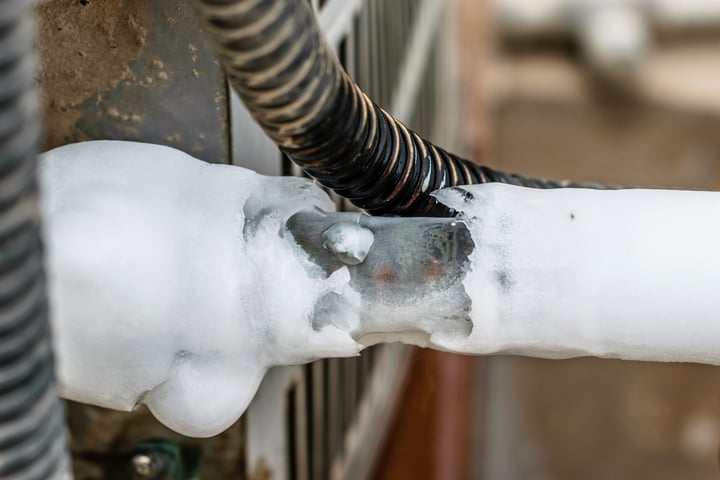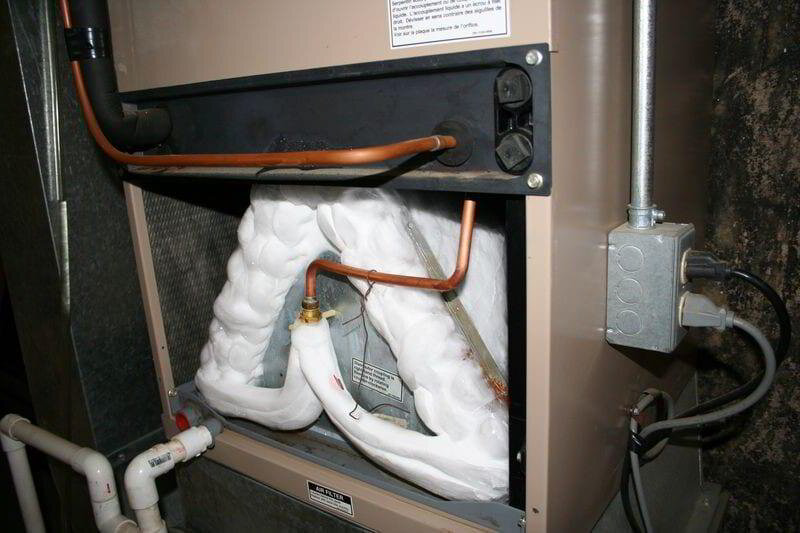Handling a Frozen AC Pipe - Advice for Addressing the Issue
Handling a Frozen AC Pipe - Advice for Addressing the Issue
Blog Article
They are making a number of good annotation on What Causes AC Pipes To Freeze? overall in the article down below.

Intro
Discovering that your air conditioning pipeline is frozen can be concerning, specifically throughout hot summertime when you rely upon your a/c one of the most. Recognizing what to do in such a scenario is critical to stop more damages to your cooling system and ensure your convenience indoors.
Recognizing the Causes
Several factors can add to the freezing of an air conditioning pipe. Recognizing these causes can help you resolve the problem efficiently.
Absence of Airflow
One typical cause of an icy AC pipeline is inadequate airflow. When the air flow over the evaporator coil is restricted, it can create the coil to drop below freezing temperature, bring about ice development on the pipe.
Reduced Refrigerant Levels
Insufficient refrigerant levels in your AC system can also cause an icy pipe. Low refrigerant degrees can trigger the stress in the system to drop, bring about the cold of moisture on the evaporator coil.
Cold Weather Conditions
In cooler climates, freezing temperatures outside can add to the cold of air conditioner pipes. If your AC unit is not correctly protected or if there are leaks in the ductwork, cool air can penetrate the system, creating the pipeline to freeze.
Dirty Air Filters
Dirty or clogged air filters can limit air flow in your a/c system, causing different issues, including an icy pipeline. It's important to replace or cleanse your air filterings system on a regular basis to make certain correct air flow and avoid ice build-up.
Indications of a Frozen Air Conditioning Pipe
Acknowledging the indicators of a frozen AC pipeline is crucial for timely action.
Lowered Airflow
If you discover a substantial reduction in air flow from your vents, it can show an icy pipeline.
Ice Buildup on the Pipe
Noticeable ice buildup on the refrigerant line or the evaporator coil is a clear indicator of an icy a/c pipeline.
Weird Sounds from the Unit
Uncommon sounds, such as hissing or bubbling, coming from your air conditioning device can signify that there's ice existing on the pipe.
Immediate Actions to Take
When faced with a frozen AC pipe, it's essential to act quickly to prevent more damages to your cooling system.
Turning off the AC
The very first step is to switch off your ac unit to prevent the system from running and exacerbating the concern.
Looking for Blockages
Check the location around the interior system for any blockages that may be blocking airflow, such as furniture or curtains.
Thawing the Pipe
You can utilize mild techniques like positioning towels taken in warm water around the icy pipeline to aid thaw it gradually.
Safety nets
Taking preventive measures can help avoid future incidents of a frozen AC pipeline.
Normal Maintenance Checks
Arrange normal maintenance get in touch with an expert HVAC professional to guarantee that your air conditioner system is running effectively.
Changing Air Filters
Regularly change or cleanse your air filters to avoid air flow restrictions and keep optimal efficiency.
Insulating Exposed Pipes
If your air conditioner pipes are exposed to cold temperatures, consider insulating them to stop cold during winter season.
Seeking Professional Help
If DIY approaches stop working to fix the issue or if you're unsure concerning exactly how to continue, it's finest to seek aid from a qualified HVAC technician.
When DIY Methods Fail
If your efforts to thaw the pipe or address various other issues are not successful, it's time to hire a specialist.
Significance of Hiring a Professional HVAC Technician
A qualified HVAC specialist has the expertise and tools necessary to identify and fix issues with your air conditioning system securely and properly.
Conclusion
Taking care of an icy AC pipe can be a discouraging experience, yet recognizing just how to react can aid decrease damages and restore convenience to your home. By recognizing the causes, recognizing the indications, and taking punctual activity, you can effectively deal with the problem and protect against future occurrences.
Frozen AC Line: Why It Happens & What To Do About It
A frozen AC line can be a rather peculiar sight in a place like Phoenix, Arizona where nothing ever freezes. In this post, we’ll discuss what makes an air conditioner line frozen – and what you can do about it.
Dirty Air Filters
Did you know that you should be cleaning or replacing your air filters on a monthly basis? Failing to do this can result in airflow issues that, in turn, cause your evaporator coils and lines to freeze over. You’ll notice a buildup of ice on both components, although the buildup on your pipes will, of course, be more evident unless you open your air condition up to reveal the coils.
What To Do About It
Give your air filter a good cleaning if it’s reusable. If not, replace the filter outright. Next, switch your air conditioner’s fan setting on and leave it there for 2-3 hours. This will draw warm air in, helping to thaw your evaporator coil. You can also check out this article for some tips on cleaning the coils themselves if you’d like to speed the process up. Before you switch the unit back to its normal state, make sure the supply vents are completely unobstructed and free of dust or other debris.
If you keep having this issue even after replacing your filters regularly, contact a local HVAC repair company and have them inspect your evaporator coil, ductwork, and any other components that may be at fault. If you live in the Phoenix, Arizona area, give American Home Water and Air a call.
Low Refrigerant Levels/Leakage
What To Do About It
Contrary to what air conditioner “recharge” companies often tell their clients about refrigerant, it should never need to be simply refilled. You see, refrigerant runs in what experts refer to as a “closed loop.” Refrigerant really shouldn’t be leaving that loop. If it is, you’ve got a leak.
Paying someone to come and pump more refrigerant into your system (aka “recharge” it) isn’t the solution. Doing that will simply kick the can down the road. Besides, refrigerant leaks can be harmful to the environment and people in your home.
Rather, you need to take care of the leak with the help of a technician. Check out this article for some more information about dealing with air conditioners that are leaking refrigerant. Before you contact a technician, switch your thermostat to the off position. Then, switch the fan setting on and let it run for 2-3 hours so the unit can thaw.
Improper Temperature Setting
Improper temperature settings can also cause a drop in your air conditioner’s pressure. What many people don’t realize is that air conditioners are actually designed to run when temperatures have fallen above roughly 60 degrees Fahrenheit. If you run the unit when it’s cold outside, you’ll run into many issues, including frozen components.

I'm certainly very taken with Have a Frozen AC Line? Here’s How to Fix It and I am assuming you enjoyed the entire blog post. Do you know another individual who is interested by the niche? Do not hesitate to share it. We recognize the value of reading our article about Air Conditioner Frozen? How To Fix your Frozen AC Line.
Schedule And Pricing Report this page